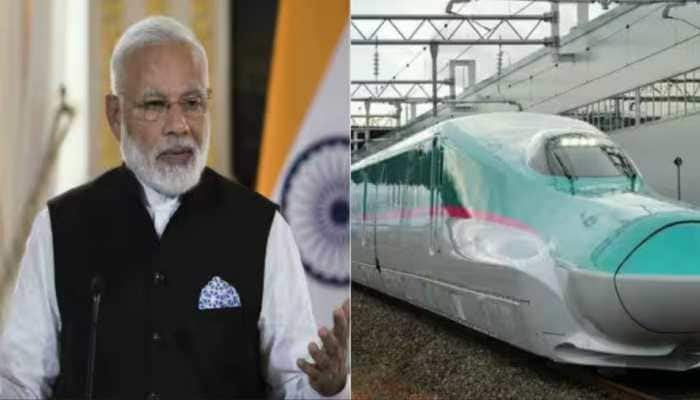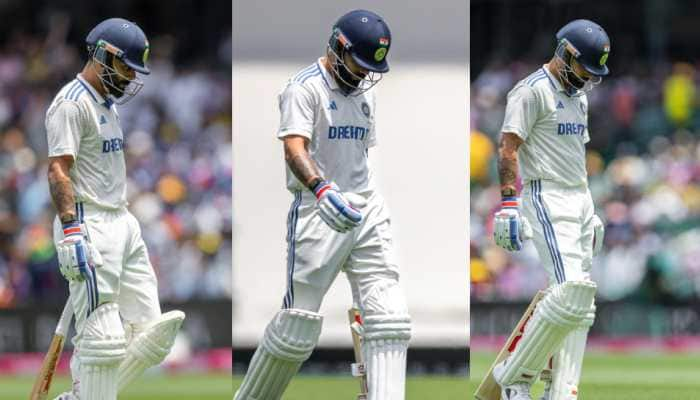NASA invites India to jointly explore Mars, send astronauts
This is of direct benefit be it for India or California where we see tectonic activity.
Trending Photos
)
Pallava Bagla
New Delhi: In future, India and the US could jointly explore Mars and who knows an Indian astronaut could also head to the Red planet on a joint mission.
India's maiden mission to the Red Planet, Mangalyaan, has opened the eyes of the world on ISRO's capabilities at undertaking low cost, high value inter-planetary mission.
Charles Elachi, director of the Jet Propulsion Laboratory or JPL, a part of NASA and an institution better known for piloting most of the American planetary exploration efforts with rovers like Curiosity, says India and the US could jointly explore Mars and even invited India to send astronauts to the Red Planet.
Excerpts of an interview:
Q) The US is interested in going back to Mars, so is India. Will India and America look at a joint robotic mission to explore Mars?
A) We hope so that it will be the case in the future. At NASA, we are just beginning to plan for next mission to Mars for the next decade, which is 2020-2030. In fact shortly, there is a meeting in Washington on possible collaborations for the next 5-6 mission to Mars and ISRO is invited for that meeting. This is in preparation for the ultimate human space flight to Mars. We clearly hope that India would be interested. Hopefully, India will be part of the consortium between US, Europe, France, Italy among others where all can capitalise on our capabilities to explore the solar system.
Q) A cooperative exploratory mission is what you are looking at?
A) Yes, that is right. With its accomplishment on the Mars Orbiter Mission (MOM) India is a great partner, India can be a full partner in the international endeavour for exploring Mars.
Q) In the long run, President Barack Obama has said America should send humans to Mars, so are you looking at a collaboration with India on that mission, since India also has a human space flight program?
A) NASA is starting to plan for the human expedition to Mars, and NASA is looking at it as an international endeavour. NASA has invited international agencies to start thinking together on how to send humans to Mars and beyond. So clearly that is an area where there will be collaboration between India and the US considering the capability that India has, by showing that it can meaningfully contribute to international endeavours.
Q) What was NASA's role in India's mission to Mars?
A) When India launched its mission to Mars, and I congratulate India on a superb mission by reaching the orbit or Mars in the very first attempt. JPL supported ISRO in the navigation and communication because of the antennas we have. Reaching the Mars orbit in first attempt was an amazing achievement and that too at such low cost. Now American scientists through its MAVEN mission and India through its Mars Orbiter Mission are sharing data.
Q) NASA is looking to mine an asteroid, is India likely
to participate on that mission?
A) We are looking at a mission using electric propulsion, which is a major advancement in technology, to capture an asteroid and bring it back to lunar orbit so that astronauts can go and do more deeper exploration. NASA has opened the door for potential interest, be it from India or Europe. We are in a very early stage of planning so that is clearly an opportunity for more collaboration with India.
Q) Where are Indo-US relations in space heading?
A) I think they are heading for a very positive future, from five years ago the interest has now tremendously expanded. There is now good will both politically and scientifically, I am very optimistic about the future in space collaboration. Space is for everybody, the good will between two countries makes space a natural place to work together. The two can cooperate even in astronomy, India has a long history in astronomy. I visited the ancient observatory made by Indians (at Jantar Mantar) that is a few hundred years old that furthered knowledge and now we can do it together. India has a great tradition of learning.
Q) What else is in store for NASA and ISRO in the future?
A) We have a mission called NASA-ISRO Synthetic Aperture Radar (NISAR) mission. This is a major mission that will be launched in 2020. Here we are really collaborating as equals, between India and the US. This mission will allow us to look at natural resources across the world, natural hazards like tectonic motion, climate impact and climate change. This is of direct day-to-day benefit for life both in USA and India. This came up as a collaboration among scientists but is now a full-fledged approved joint mission between both countries.
Q) How can you decipher things from space after a disaster strikes?
A) This is a RADAR mission, that has the capability to take a picture of the land, and then you come back a few days later and take another picture. In the meantime, if there was a change even down to a scale of a few centimeters we can detect it from space.
This gives you a picture of the motion that has occurred as result of an earthquake or mudslide. This will allow us to better understand the physics behind an earthquake. Potentially it will allow us to predict areas with large natural hazard.
This is of direct benefit be it for India or California where we see tectonic activity as well. The two main RADAR instruments are being developed by NASA and ISRO, the satellite bus will be Indian and it will be fabricated in India and then it will be launched using the Indian rocket the Geo-synchronous Satellite Launch Vehicle. This time we are truly collaborating as equals.
Stay informed on all the latest news, real-time breaking news updates, and follow all the important headlines in india news and world News on Zee News.
Live Tv







)
)
)
)
)
)
)
)
)
)
